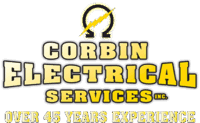 Even before winter had officially arrived this season, news reports were rolling in from across the country, detailing the tremendous snow and ice storms that were sweeping through many states, wreaking havoc and causing major power outages in their wake. Although for many people, the result was days without power including loss of lights, heat and hot water, those who had generators on hand were better able to cope until power outages were resolved.
Even before winter had officially arrived this season, news reports were rolling in from across the country, detailing the tremendous snow and ice storms that were sweeping through many states, wreaking havoc and causing major power outages in their wake. Although for many people, the result was days without power including loss of lights, heat and hot water, those who had generators on hand were better able to cope until power outages were resolved.
It’s true, having a home generator can be a real benefit in the winter months, but that doesn’t mean that simply owning a generator will be enough to solve all your weather-related electrical problems. Here are three of the most common winter-related home generator problems and the steps you can take now to help prevent them:
- Carbon monoxide poisoning: This is a major problem in winter when people have their homes closed up tight against the cold and wind, and most of the problems are due to the improper use of space heaters. However, a fair share are due to improper use of home generators. To avoid potential carbon monoxide poisoning – which can be deadly – NEVER operate your generator in your home – even in a basement or garage – and when placing it outside, make sure it’s at least 10 feet away from any vents, doors or windows – yours as well as your neighbors’. Install carbon monoxide detectors in the living area and all the sleeping areas of your home.
- Shock hazards: Since generators are often used in the rain and snow, it’s important to take extra precautions to avoid electrical shock risks, which are increased in wet weather. When possible, store your generator under a covered area like a carport or open-sided shed or portable canopy so you’re standing on dry ground when operating it. Make sure the generator is not located in a depression where water can collect. Make sure your generator is properly grounded and where shoes with rubber soles when operating it.
- Power cord problems: Many people use extension cords to run their generators, and they can cause additional hazards. In addition to the obvious risk of tripping and falling, especially on icy ground, extension cords run through windows provide another place for carbon monoxide to enter. If you must run a cord through a cracked window, consider sealing the space with duct tape to prevent fumes from entering, and again, place the generator far away from the window. Plug cords into the generator with the power switch in the off position and, ideally, the breaker off as well. Turn on the generator and power on the breaker after the cords are in place. Inspect all cords – extension cords and dedicated power cords – before each operation, all along the length of cord as well as at both ends to check for worn spots and fraying that could cause shorts and shocks. Consider having a transfer switch installed to avoid extension cord problems.
Generators can be lifesavers – literally – when winter storms hit. Understanding their risks and issues as well as their benefits is the best way to ensure you and your generator weather the winter safely.


